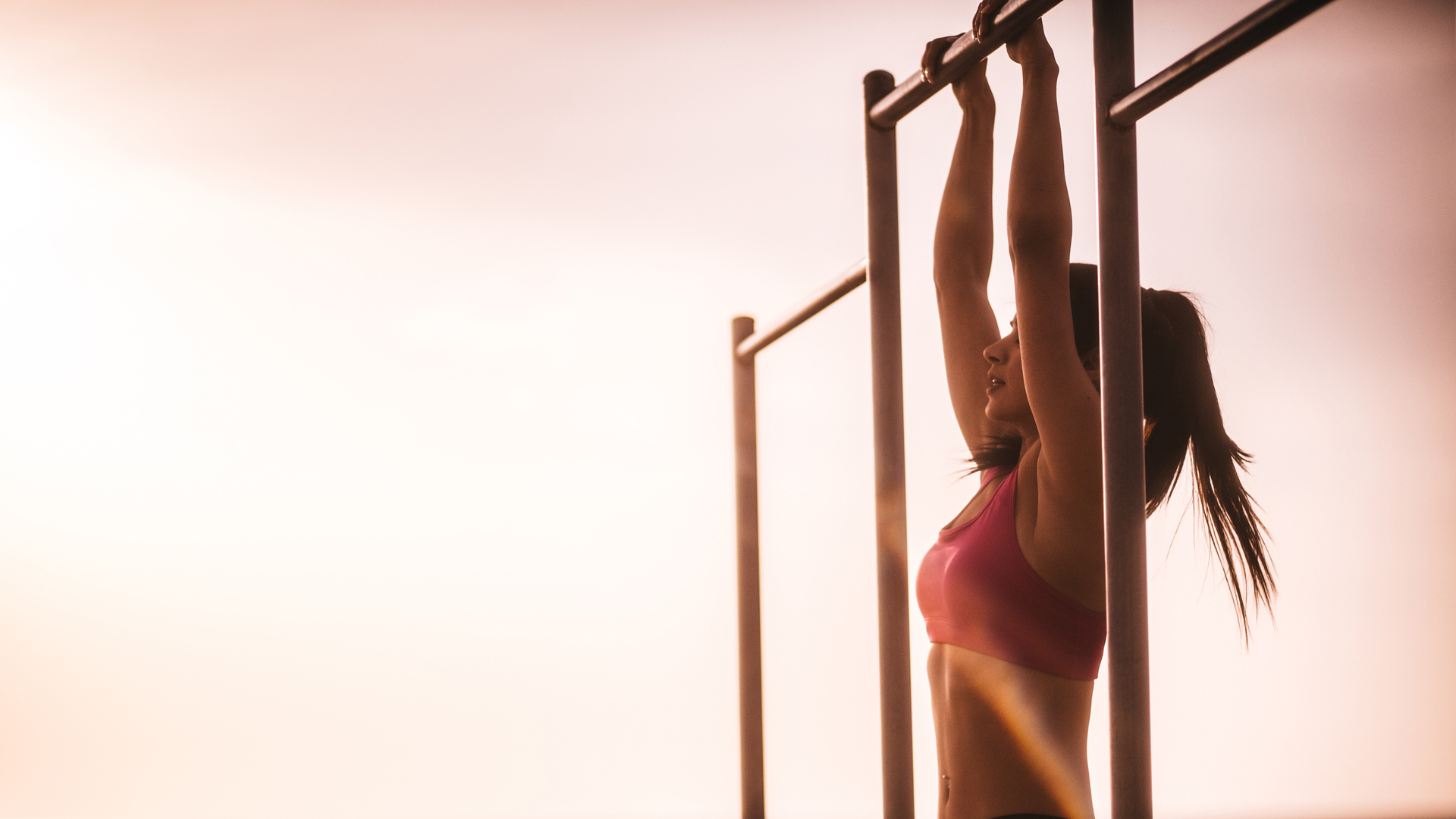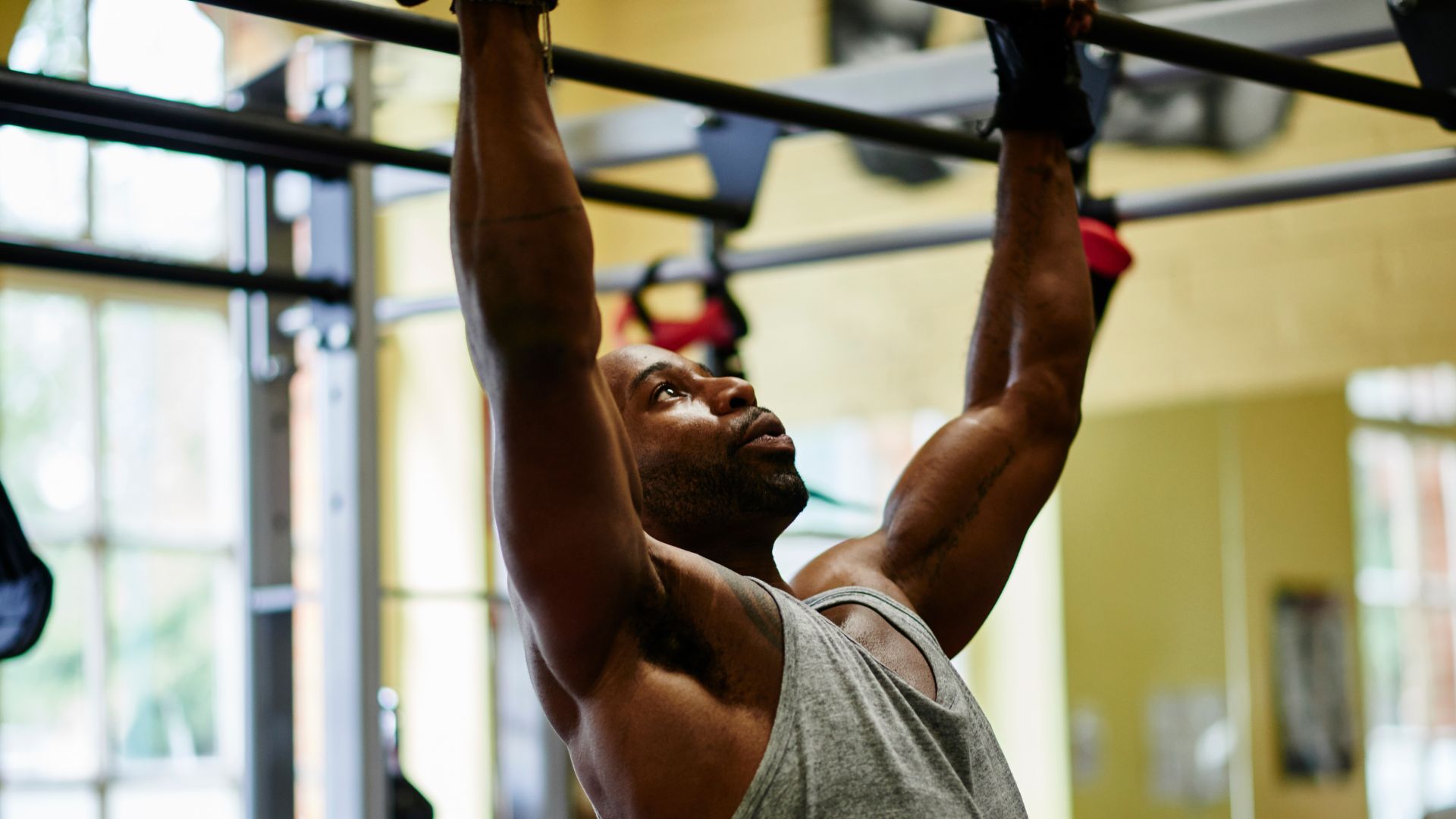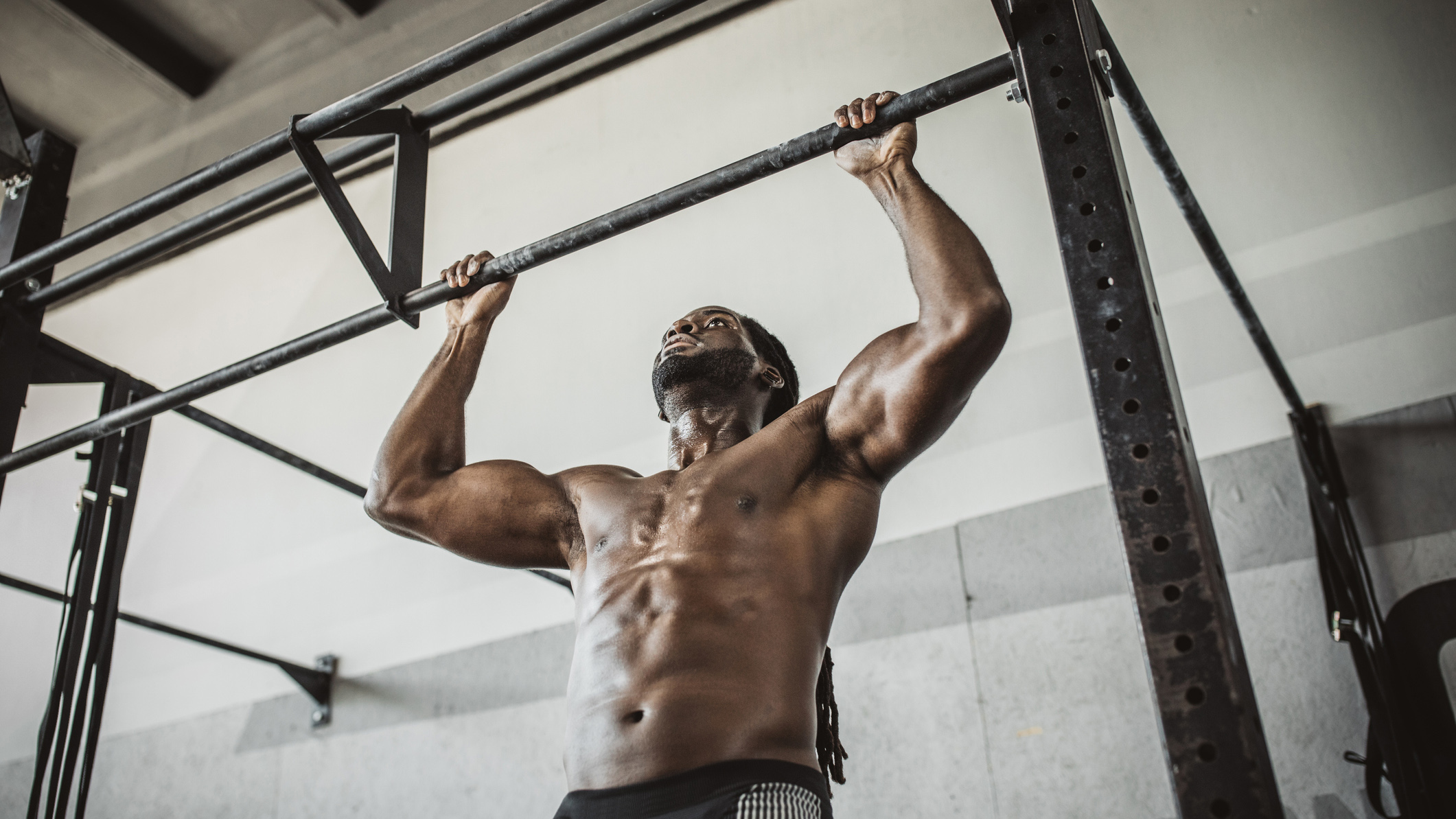

Wherever you are on your fitness journey, the pull-up remains one of the most challenging – and rewarding – exercises you can conquer. Lifting your bodyweight from a dead hang until your chin clears the bar is no small feat, demanding significant strength in your upper back, lats, biceps, shoulder and core.
While it might seem like an elusive milestone for beginners, I promise it’s achievable. I’ve been there – when a single pull-up was so out of reach – but with the right focus, technique and consistent strength-building efforts, I eventually worked my way to working sets of five and even eight unbroken. It’s not easy, and it takes time, but with patience and hard work, you can get there too.
What muscles do you need to train for the pull-up?
Firstly, it’s important to distinguish between the pull-up and the chin-up, as the muscles they target differ slightly. (more on this subject here: pull-ups vs chin-ups)
The main difference lies in the hand position: a pull-up requires your palms to face away from your body (pronated grip), while a chin-up has your hands facing you (supinated grip). This small change means chin-ups generally engage the biceps more.
The pull-up is a compound exercise that works multiple muscles and joints simultaneously, mainly in the upper body and core. Here are the primary and secondary muscles a pull-up works:
Latissimus dorsi (lats): the largest muscles in your back, located on either side of your spine. The lats are the primary muscles pulling your arms down and toward your body.
Biceps brachii: located on the front of your upper arm, they help in bending your elbows to pull your body upward.
Get all the latest news, reviews, deals and buying guides on gorgeous tech, home and active products from the T3 experts
Rhomboids: found between your shoulder blades, they help pull the shoulder blades back and down during the pulling motion.
Pull-ups also work a range of other muscles, including:
- Trapezius (traps) - the middle and lower traps stabilise and control the shoulder movement.
- Deltoids (rear shoulders) - these help to stabilise the shoulders and arms.
- Forearms - they help to grip the bar and control the pulling motion.
- Pectoralis minor (chest) - this plays a supporting role in shoulder stability.
- Rectus abdominis - you'll engage your abs to stabilise your torso and prevent excessive swinging.
- Obliques - your side core muscles will provide additional core stability.
- Erector spinae - these will stabilise your lower back and spine during the pull-up.
Why are pull-ups so hard?

As you can see, many muscles are involved – but don’t let that put you off. It’s common for beginners to have weaknesses in back muscles, grip strength or shoulder mobility, but these can all be overcome with targeted and progressive training.
Aim to build a mind-body connection to engage the back, shoulder blades and core and not rely on the arms. Exercises like the lat pull-down and inverted row activate and strengthen the pulling muscles, while the dead hang builds grip endurance.
Practising the movement pattern is important, too, achieved by doing assisted pull-ups using resistance bands.
Your four-week training plan
To guide you toward your first pull-up, certified personal trainer Saima Husain has created a structured, comprehensive training plan.
“The plan combines strength exercises, technique-building and progressive overload to ensure you’re continuously challenged over the weeks,” says Husain. Husain has shared a few extra tips to help you maximise results throughout the programme.
Maintain a braced core and squeeze your glutes when performing the inverted row, chin hold and banded pull-up. This will allow for better engagement and form.
For the banded pull-up, start with the thickest band to build your repetitions, confidence and movement pattern. Once you can achieve 10 repetitions and three sets, switch to a lighter band and resistance and work up to 10 repetitions again.
Always breathe out before or as you pull yourself up. Breathe in as you lower yourself down away from the bar.
WEEK 1
Day 1
Bent knee inverted row 3-5 sec tempo on lowering 3 x 5
Single arm dumbbell/kettlebell row 3 x 8-10
Long lever dead bug 3 x 12-16
Two-minute rest in between sets
Day 2
Chin over bar hold (pronated grip) 5 sec (or as long as you can) hold 3 x 3-5. Regress this by having both feet or one foot resting on a box to maintain the hold and negative.
Hollow hold 3 x 10-20 seconds
Zottman curl 3 x 8
Two-minute rest in between sets
Day 3
Dead hang 3 x 10-20 seconds
Scapular shrug 3 x 4-6
Negative pull-up 3-5 secs to lower 3 x 5
Lat pull down 3 x 8-10
Two-minute rest in between sets

WEEK 2
Day 1
Bent knee inverted row 3-5 sec tempo on lowering 3 x 5-8
Single arm dumbbell/kettlebell row 3 x 8-10
Long lever dead bug 3 x 12-16
Two-minute rest in between sets
Day 2
Chin over bar hold (pronated grip) 5 sec (or as long as you can) hold 3 x 3-5. Regress this by having both feet or one foot resting on a box to maintain the hold and negative.
Hollow hold 3 x 10-20 seconds
Biceps curl 3 x 8
Two-minute rest in between sets
Day 3
Dead hang 3 x 10-20 seconds
Scapular shrug 3 x 4-6
Negative pull-up 3-5 secs to lower 3 x 5
Lat pull down 3 x 8-10
Two-minute rest in between sets
WEEK 3
Day 1
Full-body inverted row 3-5 sec tempo on lowering 3 x 5-8
Single arm dumbbell/kettlebell row 3 x 10-12
Long lever dead bug 3 x 16
Two-minute rest in between sets
Day 2
Chin over bar hold (pronated grip) 2 second-hold + 3-second negative 3 x 3-5. Regress this by having both feet or one foot resting on a box to maintain the hold and negative.
Biceps curls 3 x 10
Two-minute rest in between sets
Day 3
Dead hang 3 x 10-20 seconds
Banded pull-up + 2 second-hold + 3-second lower 3 x 5
Lat pull down 3 x 10-12
Two-minute rest in between sets
WEEK 4
Day 1
Full-body inverted row 3-5 sec tempo on lowering 3 x 8
Single arm dumbbell/kettlebell row 3 x 10-12
Long lever dead bug 3 x 16
Two-minute rest in between sets
Day 2
Chin over bar hold (pronated grip) 2 second-hold + 3-second negative 3 x 3-5
Biceps curl 3 x 8
Two-minute rest in between sets
Day 3
Dead hang 3 x 20-30 seconds
Banded pull-up + 2 second-hold + 3-second lower 3 x 5
Lat pull down 3 x 10-12
Two-minute rest in between sets

Yanar Alkayat is a seasoned health and fitness journalist with over two decades of experience writing for leading publications. Passionate about fitness and wellness, she specializes in topics ranging from strength training to emotional wellness. Yanar has contributed to renowned titles such as Women’s Health, Marie Claire and Fit&Well, blending expert insights with relatable narratives. Beyond writing, she’s a 580-hour registered yoga therapist, 200-hour yoga teacher and level 3 personal trainer at Yanar Mind & Movement.